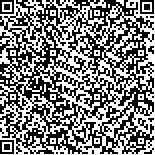| 匡夏颖,邵 楠,林 颖.353例遗传性高危乳腺癌患者BRCA1、BRCA2、PALB2基因胚系突变的分布情况研究[J].肿瘤学杂志,2022,28(11):946-950. |
| 353例遗传性高危乳腺癌患者BRCA1、BRCA2、PALB2基因胚系突变的分布情况研究 |
| Distribution of Germline Mutations in BRCA1, BRCA2 and PALB2 Genes in 353 Patients with Hereditary High-risk Breast Cancer |
| 投稿时间:2022-09-28 |
| DOI:10.11735/j.issn.1671-170X.2022.11.B010 |
|
 |
| 中文关键词: 乳腺癌 BRCA1基因 BRCA2基因 PALB2基因 胚系突变 遗传 |
| 英文关键词:breast cancer BRCA1 BRCA2 PALB2 germline mutation hereditary |
| 基金项目:广东省自然科学基金面上项目(2017A030313596);广州市科技计划项目基础与应用基础研究项目(202102020641) |
|
| 摘要点击次数: 730 |
| 全文下载次数: 283 |
| 中文摘要: |
| 摘 要:[目的]通过对女性乳腺癌患者进行胚系基因检测,评估BRCA1、BRCA2、PALB2基因胚系致病/可能致病性突变在高危乳腺癌患者中的分布情况。[方法] 收集2016年12月1日至2022年4月30日中山大学附属第一医院收治的女性乳腺癌患者,对已进行胚系多基因检测的353例具有遗传性高危因素的女性乳腺癌患者,对她们的检测结果进行分析,评估BRCA1、BRCA2和PALB2基因胚系致病/可能致病性突变患者的病理和临床特征等情况。[结果] 353例患者中,胚系BRCA1、BRCA2和PALB2致病/可能致病突变者共59例,突变率为16.71%,年轻患者较其他年龄患者的BRCA1突变率更高(P=0.039),相比其他分子分型,三阴性乳腺癌患者的BRCA1突变(P<0.001)和3个基因的总突变率(P=0.007)都明显更高。和没有肿瘤家族史的患者相比,有肿瘤家族史的患者并没有体现出明显的高突变率。具有2个或2个以上危险因素的患者的基因突变率要明显高于只有1个高危因素的患者(P=0.048)。[结论] PALB2基因胚系致病/可能致病突变在高危乳腺癌患者中的发生比例较高,其重要性并不亚于BRCA1/2基因,建议将PALB2基因纳入常规乳腺癌胚系基因检测范围,且对具有遗传性高危因素的乳腺癌患者进行包括胚系BRCA1、BRCA2和PALB2基因的常规检测。 |
| 英文摘要: |
| Abstract:[Objective] To perform a germline genetic testing of BRCA1, BRCA2, PALB2 genes on female breast cancer(BC) patients, so as to evaluate the distribution of the pathogenic/likely pathogenic mutations of those genes in high-risk female BC patients.[Methods] Clinical and genetic information were gathered and analyzed from 353 BC patients, who had been chosen to carry on a germline genetic testing of BRCA1, BRCA2 and PALB2, treated in The First Affiliated Hospital, Sun Yat-sen University from Dec. 1st, 2016 to Apr, 30th, 2022. Patients should have at least one of the conditions related to high risk of hereditary BC. [Results] In 353 BC patients, 59 patients carried a germline pathologic/ likely pathologic genetic mutation(16.71%), early onset patients had a higher percentage of genetic mutations than the other groups(P=0.039), triple negative breast cancer patients have more mutation carriers(P=0.007) than patients of other subtypes, especially for BRCA1 mutation(P<0.001). Patients with family history of malignant tumors did not show a significant difference with those without family history. Patients with two or more risk factors had a higher percentage of mutations than those who have only one factor(P=0.048).[Conclusion] Patients with hereditary risk factors have high possibility with pathological variants in breast cancer-predisposition genes. We recommend that all breast cancer patients with hereditary risks undergo germline genetic testing, including BRCA1, BRCA2 and PALB2. |
|
在线阅读
查看全文 查看/发表评论 下载PDF阅读器 |